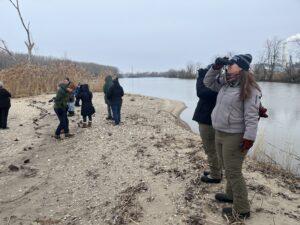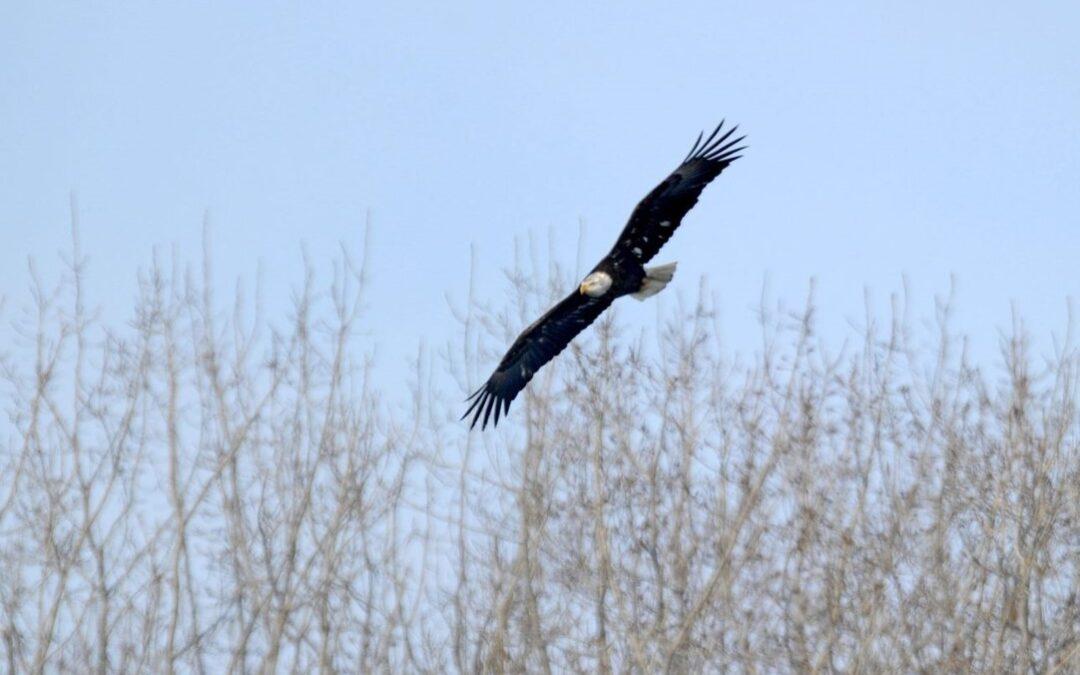On a cold, clear Saturday morning in late January, the fish were jumping, deer were grazing and dozens of bald eagles soared overhead at DTE Energy’s Monroe Power Plant. On the shore was a handful people, watching as the birds flew, played and settled on the branches of the bare trees across the river, taking in one of nature’s rarest sights as part of the annual Bald Eagle Tour.
The result of a 13-year partnership with the U.S. Fish and Wildlife Service, the Bald Eagle Tour offers a lucky few a unique opportunity to see sometimes hundreds of bald eagles living in harmony – something that almost never happens outside of locations like this one.
“The Monroe Power Plant was the first place that I ever saw a bald eagle, when I was a summer intern in college,” Kristen LeForce, an environmental engineer for DTE Energy, said. “I never fully realized that for so many decades the bird was a rare sight.”

Every winter, these majestic birds take advantage of 800 acres of certified wildlife habitat at the Monroe Power Plant – including coastal wetlands, prairies and forest – that are isolated from human activity and an ideal home for the eagles. But it’s the plant itself that sets the habitat apart from other wilderness areas. The discharge canal from the plant keeps the water above ambient temperature, preventing freezing and attracting plenty of fish to relatively balmy water. The result is plenty of food that’s easy to access for America’s national bird – as well as heron, egret, pelicans and many more.
This year’s event was the first since 2020, with the COVID-19 pandemic forcing a two-year pause. But the 11th tour was a return to form for DTE, USFWS and the Detroit River International Wildlife Refuge. Hundreds signed up to join the tour but just 60 lucky guests were selected via lottery to experience this rare chance to see these typically territorial birds live together in harmony.

While the tour is a special event for the lucky winners, it’s special for those who work to bring it to life, too.
“The public eagle tour is an opportunity for DTE to bring in other local experts, The USFWS International Wildlife Refuge and University of Michigan-Dearborn, to help bring awareness to the threats that wildlife face and share these unique birds with the public,” Kristen said. “This year, we had a family drive down from Alpena just to see the eagles at Monroe Power Plant and learn from our experts. It’s a great example of a public-private partnership and what it can accomplish when we work together.”
As the weather warms and winter turns to spring, most of the eagles will return to their homes across the region, leaving just a handful of nesting pairs who call the refuge home year-round. But when the eagles return next winter, so will the people who love to watch the eagles thrive in this unique environment.
“I hope we can continue to share this cool phenomenon with the public for as long as possible,” Kristen said.
